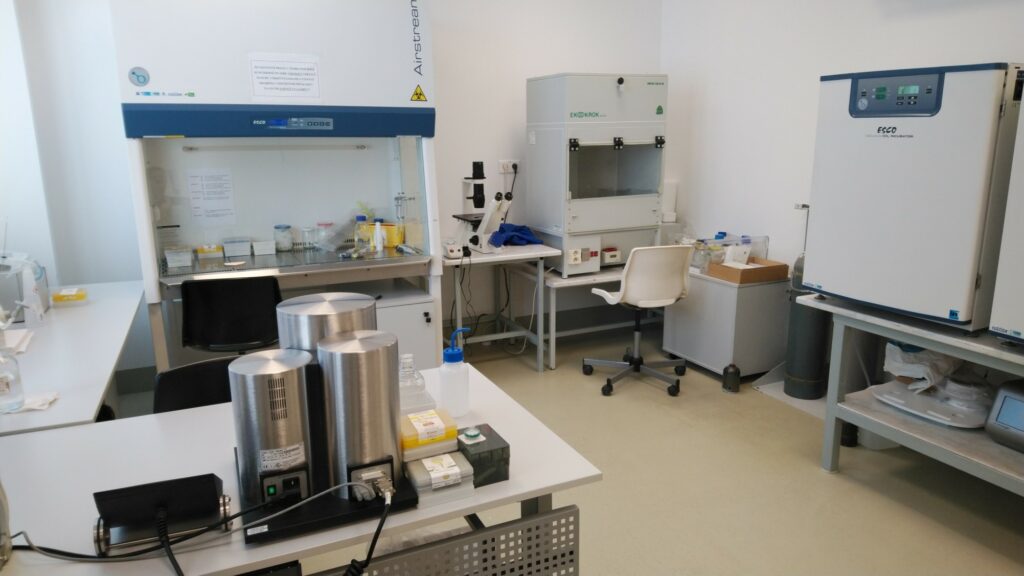
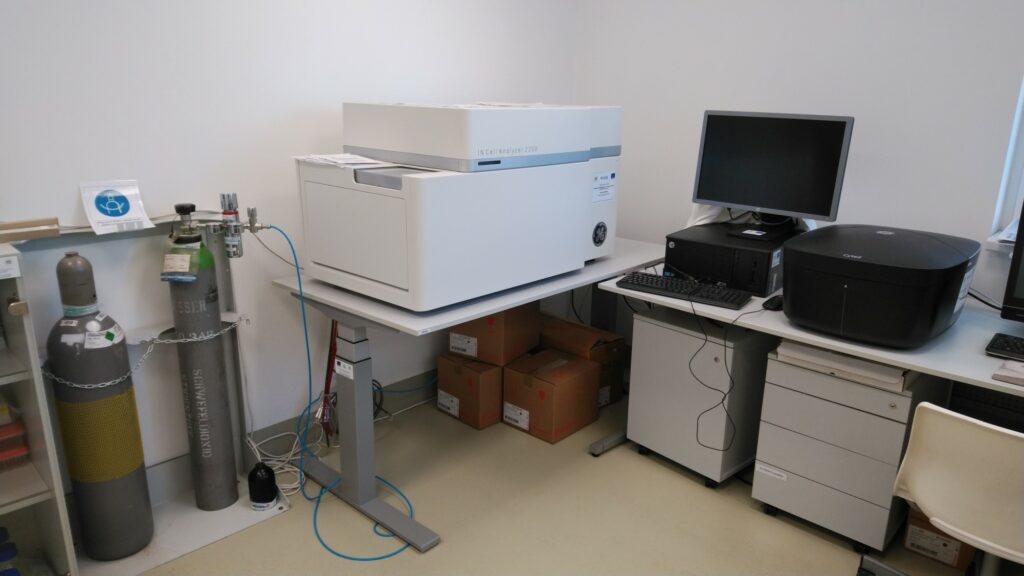
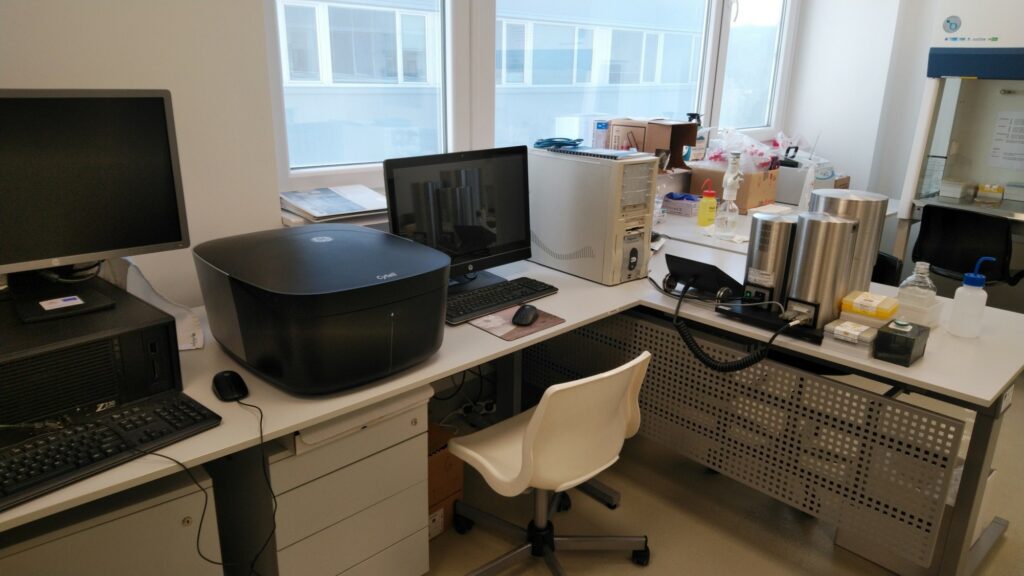
The Cytel Cell Imaging System (Amersham) is a fluorescence imaging device. It can be used as a digital microscope, an imaging cytometer, and a device for determining the number of cells in suspension. The flexibility of this equipment greatly facilitates logistics in experimental work. The instrument can perform analysis in multi-well plates, microscope slides, petri dishes, and culture bottles, which makes it possible to obtain high-quality images from a variety of samples. The acquired images and numerical data are stored in standard formats that can be imported into various analysis and statistical programs. The instrument is 4-channel, allowing the simultaneous use of several fluorescent markers.
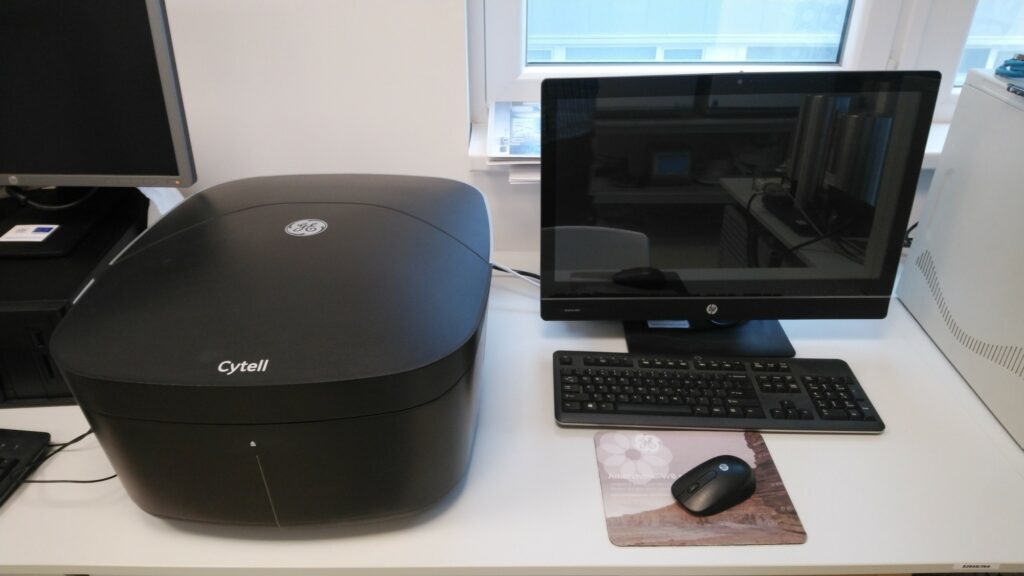
The In Cell Analyzer 2200 is a multifunctional, rapid, sensitive, and adaptable imaging system with a broad spectrum. The instrument incorporates a CMOS camera and a “bright solid-state” light source, enabling reduced exposure time and a notable increase in speed for the acquisition of high-quality images. The resolution capabilities of this instrument permit the generation of images at the level of a confocal microscope. The instrument is applicable to a variety of sample types and allows for a wide range of applications, including predictive toxicology, monitoring protein transport and localisation, as well as stem cell analysis.
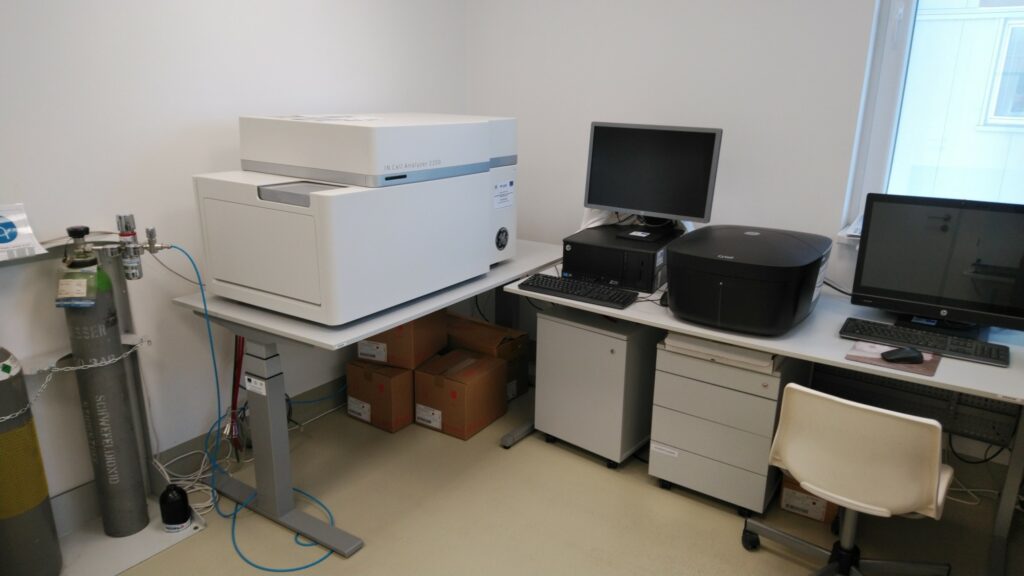
The Neon Transfection System (Invitrogen) is a second-generation transfection system that employs special pipette tips as a transfection chamber. This system circumvents the utilisation of standard electroporation cuvettes, thereby achieving high transfection efficiency while maintaining cell viability. This system permits the transfection of nucleic acids, proteins and siRNAs into all types of cell cultures.
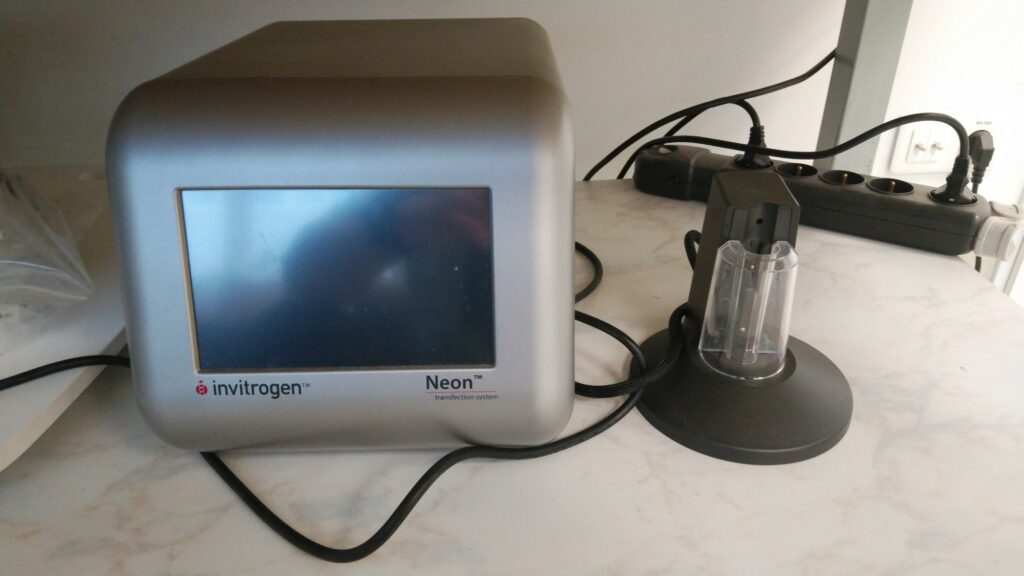
The Cassy TT system with software (Roche) is a straightforward and expedient instrument designed for a multitude of applications employing non-invasive measurement principles that render this instrument indispensable for cell culture analysis. The meticulously calibrated measuring capillaries, coupled with specific settings, permit the measurement of a comprehensive range of mammalian cells, in addition to bacteria, yeasts, algae, parasites, and other microorganisms. Furthermore, the instrument enables the monitoring of the degree of cell agglutination. The software of this instrument is compatible with MS Excel, which allows the data obtained to be transferred and evaluated in a flexible manner.
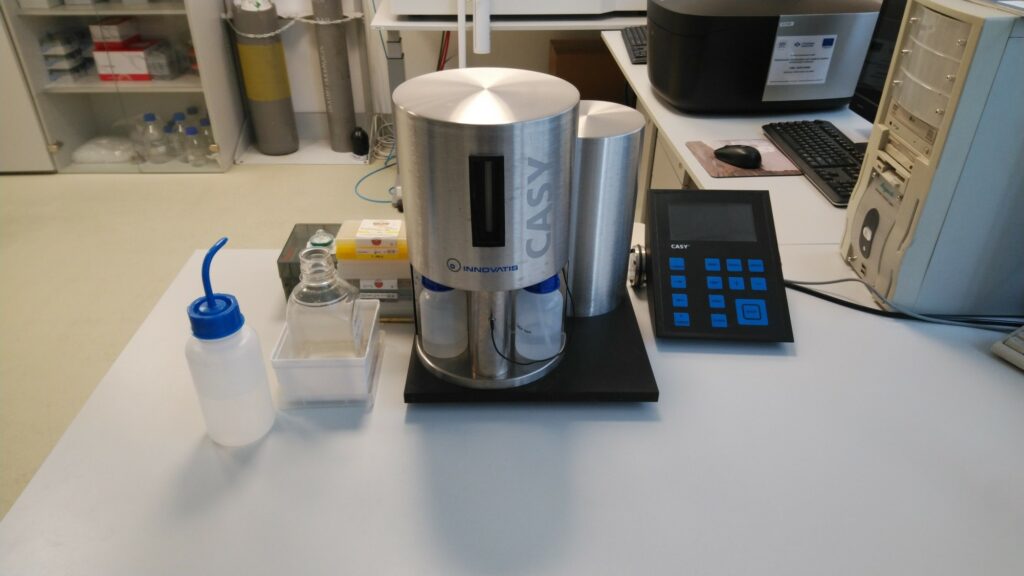
Contact: Mgr. Mário Šereš, PhD.
Support: ITMS 26240220058 and ITMS 26230120006




